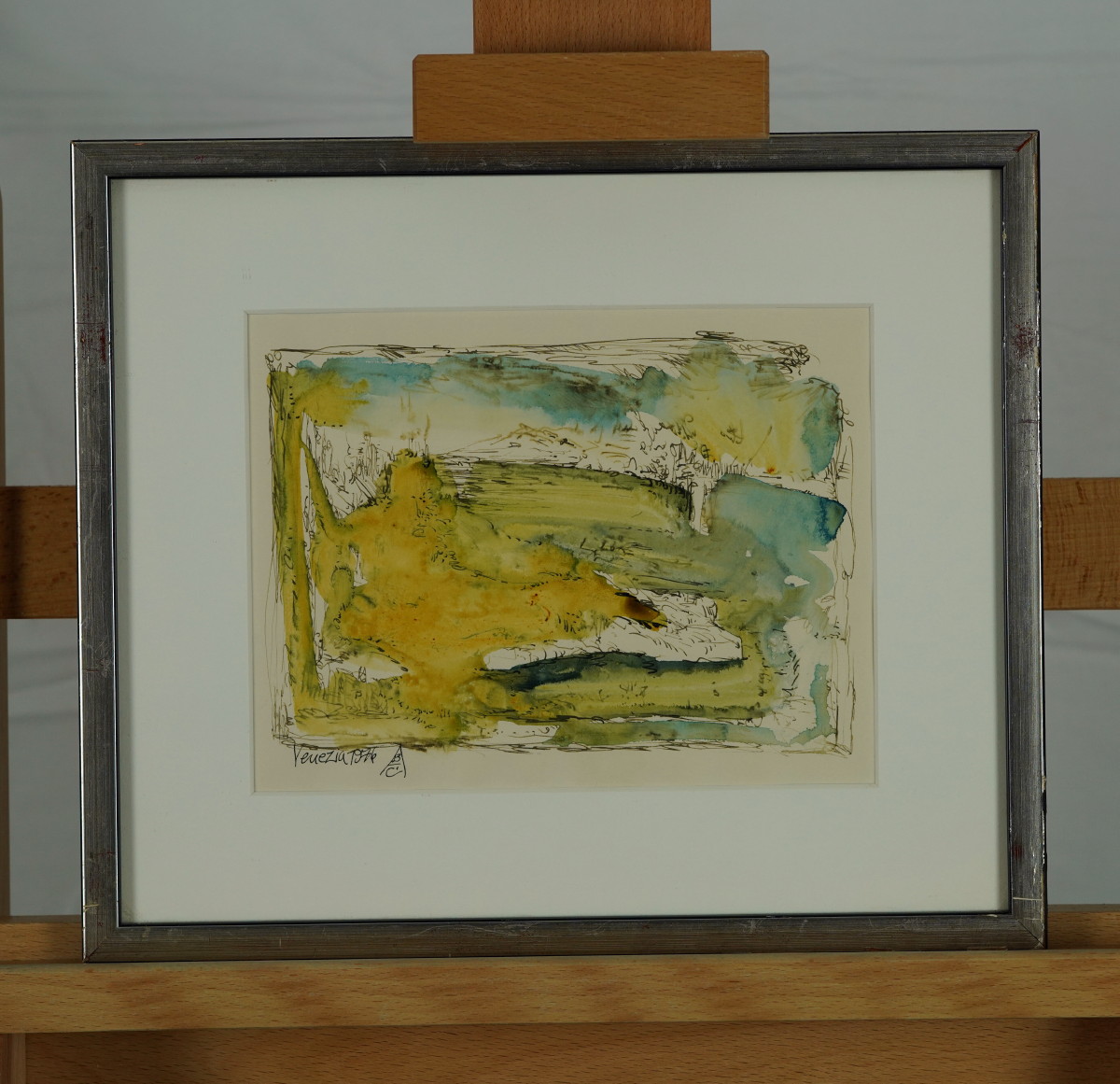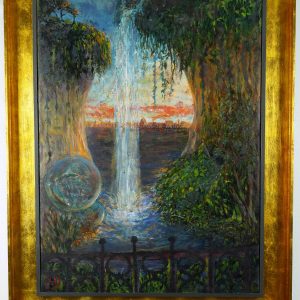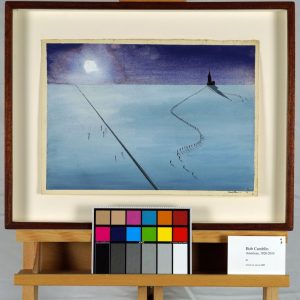Description
venice 1976, 1976
Watercolor
Signed ABC (what is the reason for this?)
6.5 x 9 in. (image)
11 x 13 in. (frame)
original, includes certificate of authenticity from ArtTrust
The lithograph “Venezia” is composed of a dense, chaotic network of black ink lines that form swirling patterns and shapes, possibly suggesting a variety of natural forms. The lines vary in density, giving certain areas a sense of depth or movement, while other regions seem more diffuse. The image appears abstract at first glance, yet closer inspection reveals an underlying structure that may evoke landscapes, organic growth, or even hints of figures. Fertile ground for your meditative eye.
In Zen, the emphasis is often on finding harmony within chaos and recognizing the interconnectedness of all things. The tangled lines in this artwork can be seen as a visual metaphor for the flow of life—ever-changing, dynamic, and interconnected. The apparent disorder invites the viewer to embrace impermanence and accept the beauty found within complexity. In the Zen tradition, there is no need to force clarity from chaos; instead, the observer learns to find stillness within the flux.
According to the I Ching, or “Book of Changes,” the constant shifting of the lines could correspond to the concept of yin and yang in a state of dynamic equilibrium. The varying intensity of the lines may symbolize the cycles of growth and decay, creation and destruction, and the duality present in all aspects of existence. The artwork can evoke Hexagram 3, “Difficulty at the Beginning,” which speaks of chaos and struggle as a necessary prelude to clarity and order.
Combining the Zen and I Ching perspectives, this piece becomes a meditation on life’s inherent unpredictability. The artwork suggests that out of apparent disorder, meaning and beauty can emerge. Just as the I Ching teaches that challenges are part of the path to wisdom, and Zen advises finding balance within life’s turbulence, this piece offers a visual journey through disorder, challenging the viewer to find their own sense of peace amid the turmoil.
The use of intricate, swirling lines may connect to the traditions of surrealist or abstract expressionist art, where artists like Jackson Pollock used fluid lines to express subconscious thoughts and emotions. It could also draw parallels to Asian calligraphy or ink painting traditions, where the flow of the brushwork is a direct expression of the artist’s inner state. This piece appears to blend influences from these various traditions, using abstract line work to evoke both natural forms and abstract thought.
This multifaceted interpretation showcases the layered meanings that can be drawn from the artwork, reflecting both Eastern philosophical traditions and Western art movements.
*Shipping cost will vary, please inquire at sales@camblingallery.com before purchasing.
Currently ships from Oregon, USA
Member of artnet? Apply for a discount! Inquire about intergallery and permanent loans for museums.
Reproductions of this drawing are available in multiple sizes!
Click here to use our high-resolution viewer!
This artwork is available with a non-fungible token to ensure traceability and transparency of provenance.
The royalty factor – Unlike traditional artworks, such as paintings, mosaics, statues, and the like, NFTs can be programmed to provide royalties to you every time the painting (and token) is sold and resold – for eternity. That mind-bending Camblin you sold could be worth millions one day and provide income for your great-great-great grandkids!
Anti-forgery – The central idea underpinning NFTs is that they are built on the blockchain, which is meant to offer advanced security. Think of it like an un-erasable and un-avoidable copyright.
Easy authentication – Another compelling aspect of NFT art and NFTs in general is the ability to quickly and easily authenticate items, as the record of ownership is scrupulously kept on the blockchain.




